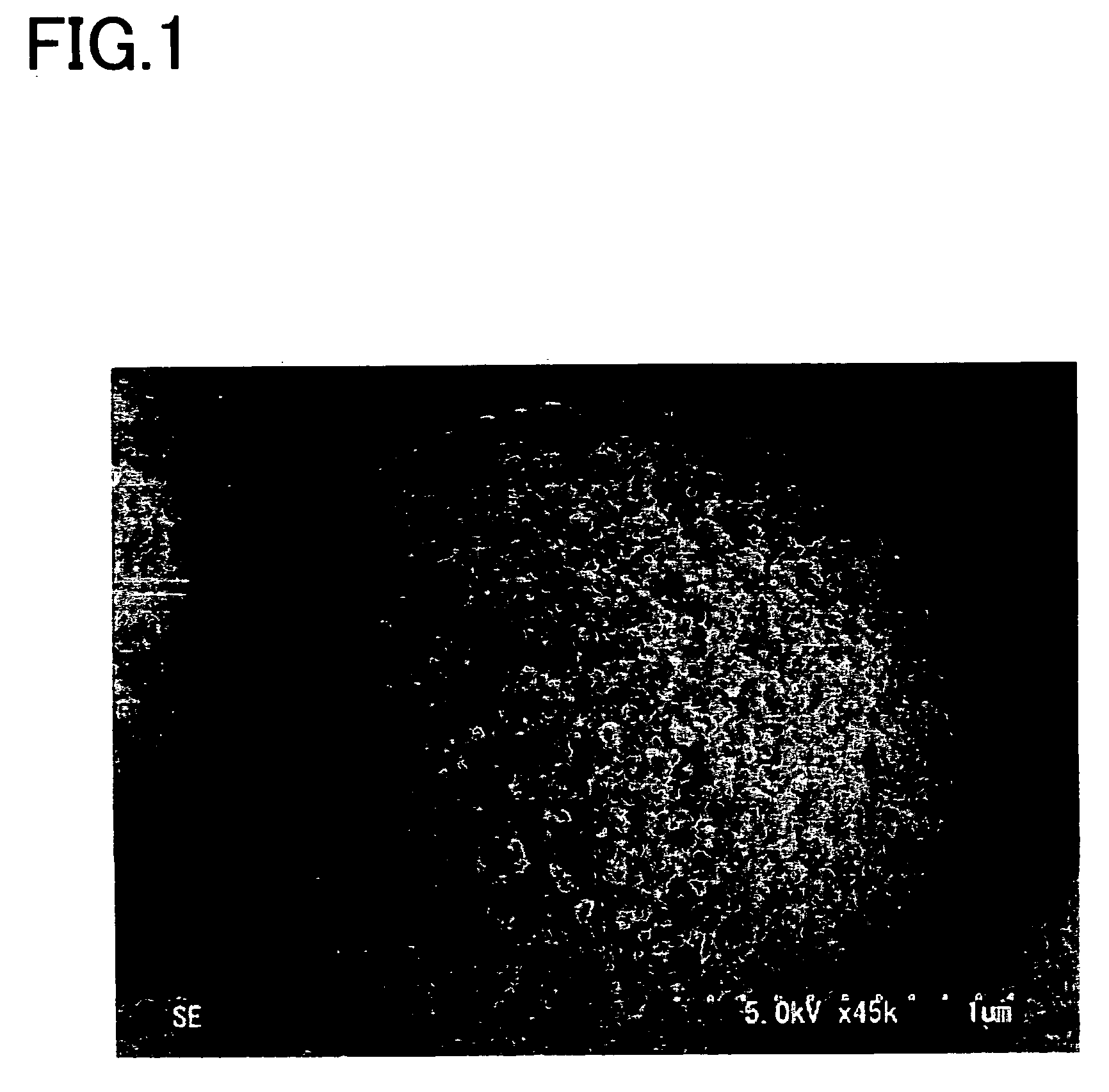Magnetic particles having porous surfaces, method of producing the same, carrier for biochemical use, and biotin-bonding particles
a technology of porous surfaces and magnetic particles, which is applied in the field of magnetic particles, can solve the problems of poor magnetic separation capability of the resulting magnetic particles, complex process for removing such a magnetic substance, and poor ability to bond biochemical substances, and achieve excellent binding capability and superior magnetic separation capability
- Summary
- Abstract
- Description
- Claims
- Application Information
AI Technical Summary
Benefits of technology
Problems solved by technology
Method used
Image
Examples
Embodiment Construction
[0030] The above-described magnetic particles having porous surfaces, method of producing the same, carrier for biochemical use, and biotin-bonding particles will be described in detail below.
[0031] 1. Magnetic Particles Having Porous Surfaces and Method of Producing the Same
[0032] The magnetic particles having porous surfaces (hereinafter referred to from time to time simply as “magnetic particles”) of one embodiment of the invention can be obtained by forming a polymer part (B) soluble in an organic solvent (S) and a polymer part (C) insoluble in the organic solvent (S) on the surfaces of magnetic matrix particles (A) and causing the polymer part (B) to come into contact with the organic solvent (S). The materials and the method used for producing the magnetic particles of this embodiment will be described below in detail.
[0033] The diameter of the magnetic particles having porous surfaces of this embodiment is preferably from 0.1 to 10 μm, and more preferably from 0.5 to 5.0 μ...
PUM
| Property | Measurement | Unit |
|---|---|---|
| diameter | aaaaa | aaaaa |
| diameter | aaaaa | aaaaa |
| diameter | aaaaa | aaaaa |
Abstract
Description
Claims
Application Information
 Login to View More
Login to View More - R&D
- Intellectual Property
- Life Sciences
- Materials
- Tech Scout
- Unparalleled Data Quality
- Higher Quality Content
- 60% Fewer Hallucinations
Browse by: Latest US Patents, China's latest patents, Technical Efficacy Thesaurus, Application Domain, Technology Topic, Popular Technical Reports.
© 2025 PatSnap. All rights reserved.Legal|Privacy policy|Modern Slavery Act Transparency Statement|Sitemap|About US| Contact US: help@patsnap.com

